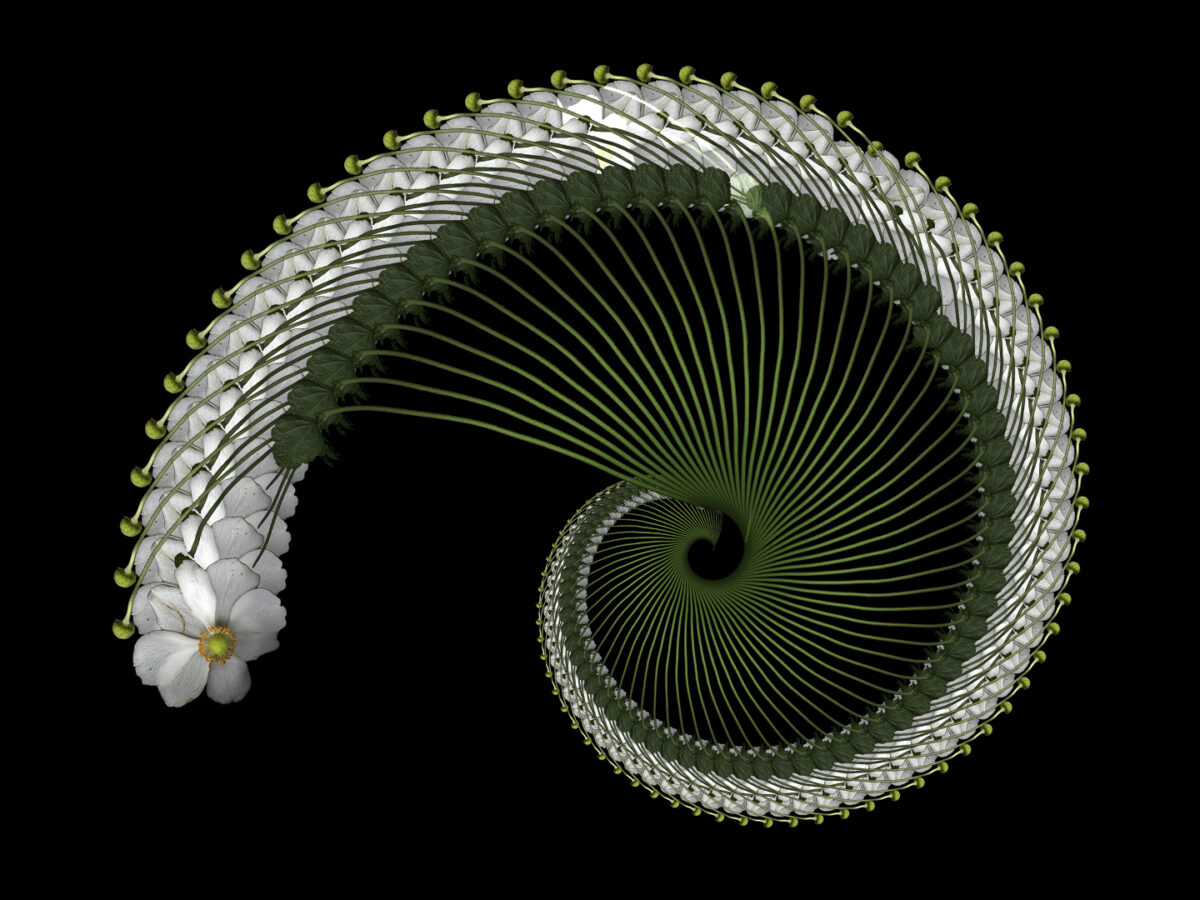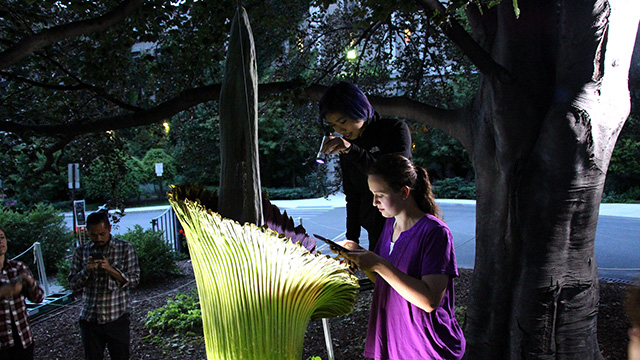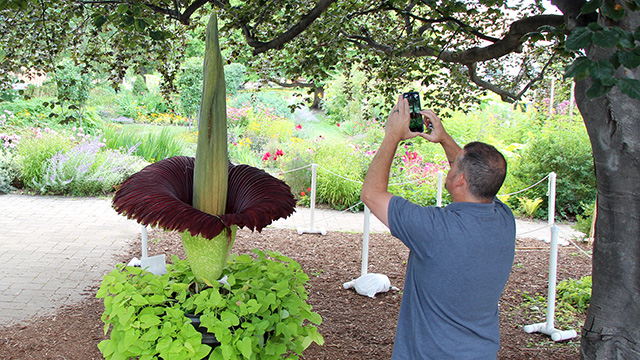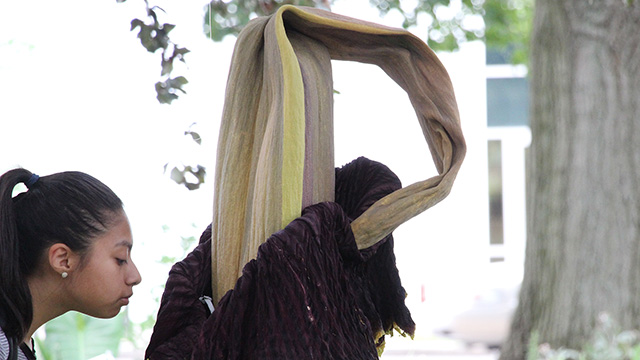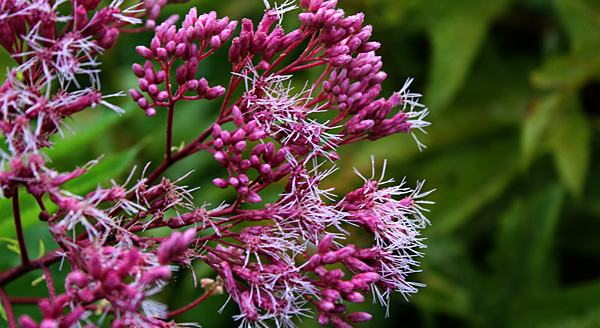These clips from my working image files will give you a better idea of how I build some of my scanner art works.
Category: Video
Titan arum blooms outside
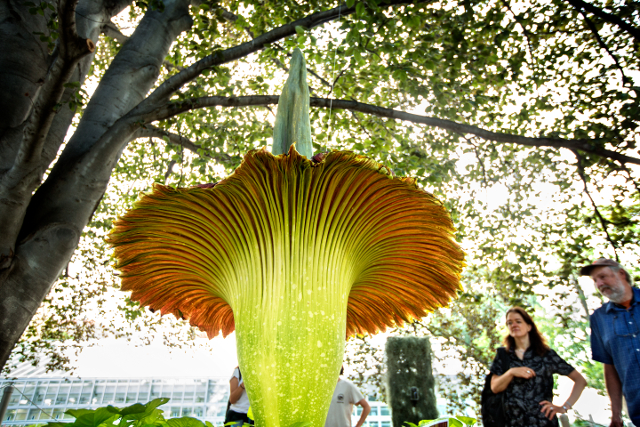
More info at the Liberty Hyde Bailey Conservatory website.
Time lapse video: Victoria lily flowering

It figures. The Victoria lily (Victoria x ‘Longwood Hybrid’) began its dramatic two-day flower display — its first since being moved to the new water feature in the Palm House this summer — just as the Conservatory was closing for the holiday weekend. Fortunately, we were able to capture the event on video.
The plant was started from seed by horticulture graduate student Miles Schwartz Sax in spring of 2015. It has much in common with the Conservatory’s titan arums (Amorphophallus titanum), even though the two species are not at all closely related,
- It’s a large plant. The cultivar we’re growing is a cross between South American natives V. cruziana and V. amazonica. The latter is the larger of the two parents, and under the right conditions it can produce pads nearly 10 feet in diameter. People often photograph small children supported by the pads to demonstrate their strength. (Obey the signage and do not try it here. It’s dangerous and you’ll injure our smaller plant.)
- The bloom time is short. Victoria lilies bloom at dusk and the blooms last only about 48 hours or so.
- The flowers use fragrance and heat to attract pollinators. The first evening, the flower is white and releases a pineapple-like scent and generates heat to attract beetles. It’s a lot more pleasant than the foul odor titan arums use to attract pollinators in search of rotting flesh.
- The flower goes to great lengths to assure cross-pollination. During the first evening, the flower’s female parts are ready to receive pollen the beetles might be carrying from another Victoria lily. The flower then closes, trapping the beetles inside. During the next day, the anthers mature and start releasing pollen that the beetles carry from the flower when it opens in the evening. The flower changes to a purplish red, signaling to beetles that their pollination services are no longer needed.
One important difference: If you missed flowering this time, you won’t need to wait as long to have another chance to view this phenomena in person. Our specimen already has another flower bud poised to open soon. Subscribe to our email updates and we’ll let you know when it’s happening.

Timelapse video: Titan arum bloom at Cornell last week
View more timelapse videos or learn more about ‘Stinky Science’ on our YouTube channel, or visit the Cornell Titan Arum blog.
Top 10 pix of 2012
Actually, this is from just before Christmas 2011, but didn’t post until Jan. 2. Early morning sun on a spot where the snow further blurs the border between plantings and the wilds beyond. A close second from the same post was this shot of lettuce ready for harvest on New Year’s.
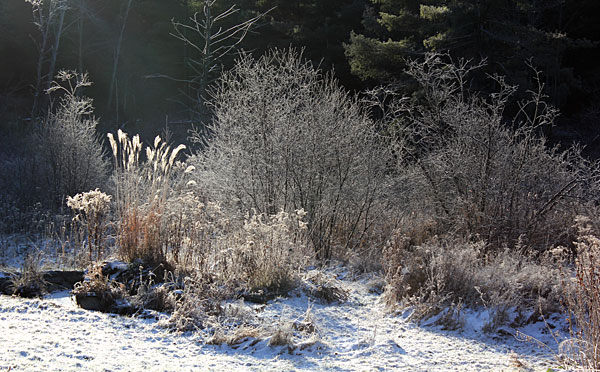
Snowdrops in Minns Garden, Cornell University, Feb. 2012. The warm, open winter got me out shooting the spring ephemerals earlier than usual. Sheltered spots like this on campus can be a week or so ahead of my blooms at home.
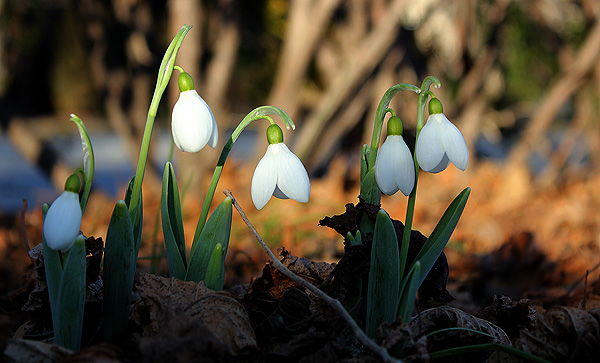
Time lapse I made of the titan arum flowering at Cornell, March. This was probably the highlight of my year. More than 10,000 visited in person. Half a million tuned in via the live feed. The researchers gave me a couple of seeds a few weeks ago and they are nestled into the most watched pots in the house. The seed head is even more beautiful than the flower, in my estimation. You can see it and more pix here.
Crocus, March. I misssed a lot of the early ephemerals working 24/7 on the titan arum. Temps went up into the upper 70s that week and they blew by while I was at work, but was able to catch some of the early action.
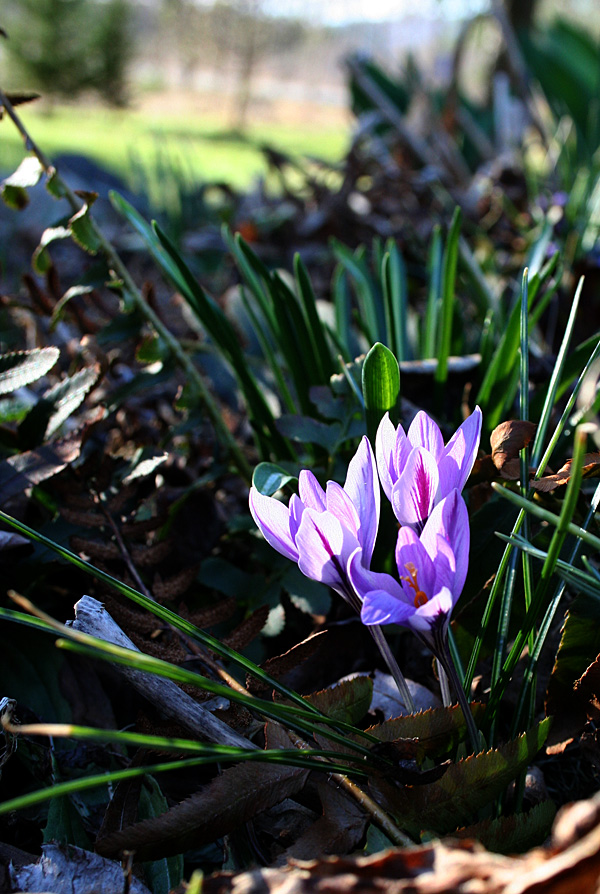
Willow, March. Willows are well-suited to my mostly wet ground. Yes, they can be rather plain. But when they flower, I’m in heaven.
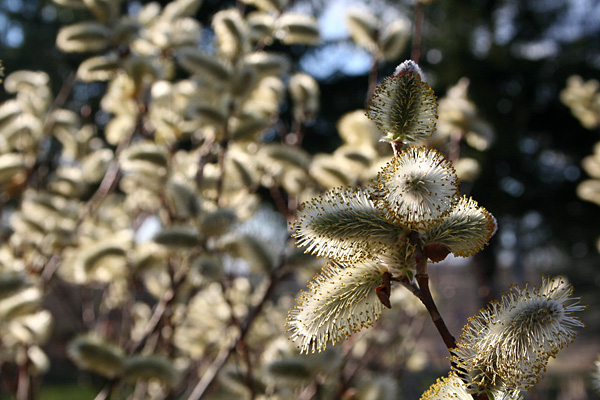
And then scan manipulation mania hit: Nectaroscordum siculum ssp. bulgaricum, Salix integra ‘Hakuro-nishiki’. Someone on Pinterest grabbed some of my bloom day scans and fiddled around with them, basically just flipping the images vertically and horizontally and piecing them together. Soon, I started composing the scans with these 4-pane manipulations in mind.
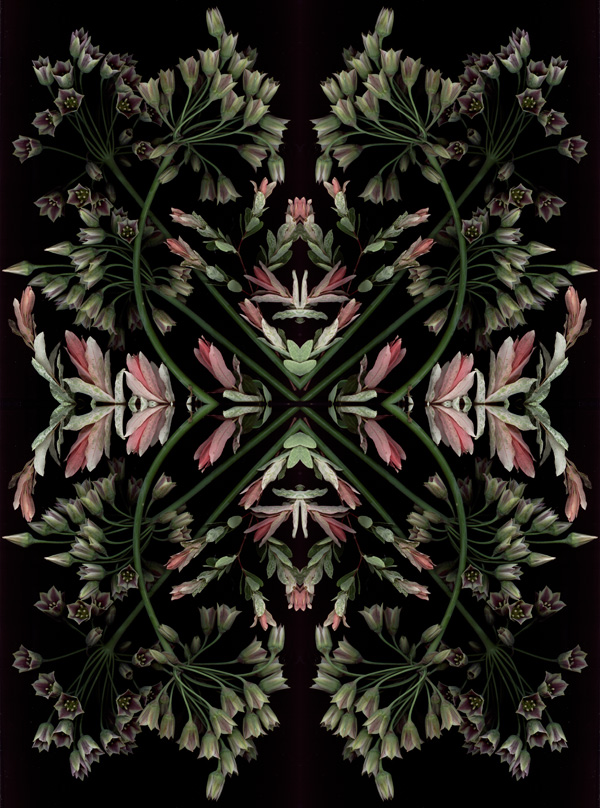
Later on, I found a recipe for making kaleidoscopic images from scans, and piece them together into honeycomb mosaics. This one is a classic optical illusion — not that that’s what I was shooting for — from a scan of bottlebrush buckeye, if I recall correctly.

Canna mosaic. Am considering making ceramic tiles or fabric from some of these.

Grass seedheads, November. This one made a nice kaleidoscope mosaic.
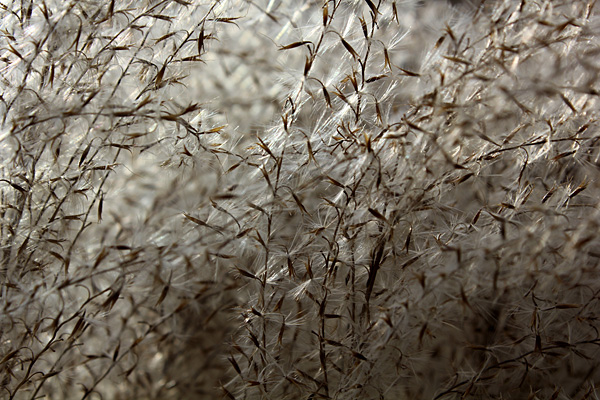
Florists cyclamen, December. I did this in a little temporary makeshift studio using light from the north window in my office.

And I couldn’t resist fiddling with it some more.
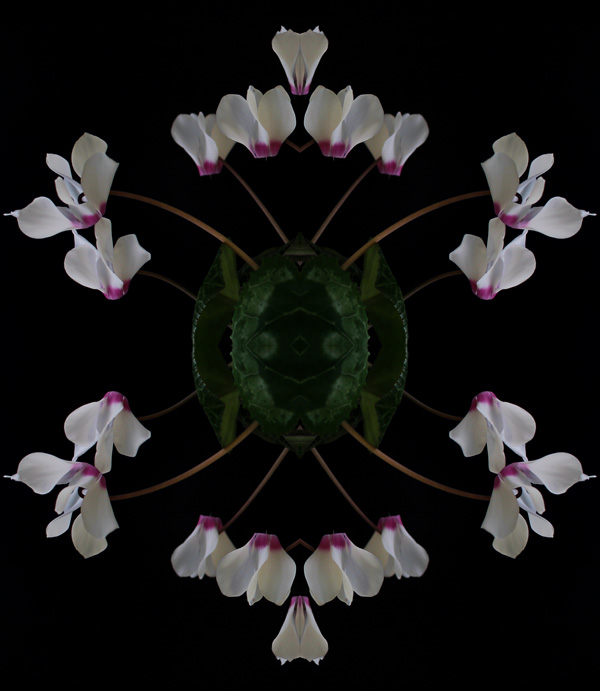
Gotta go shovel out. Doesn’t look like we got the foot or more that was predicted overnight. But there’s enough to work up a sweat.

